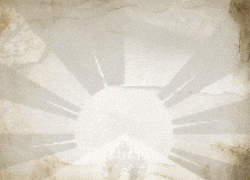The influence of the Chinese Communist Party is all-pervasive in Tibet and stands in stark contrast to the religious traditions of the people
By JYOTI MALHOTRA
Watching the Potala palace as it turns from an inky, translucent blue to a pearly grey-off white in the early morning light, is a singular experience. The palace of the Dalai Lamas stands on a rocky outcrop in the middle of Lhasa, and although it now has the Eiffel tower-like spout of a television tower for company somewhere across the city, the Potala dominates the skyline.
Still, ever since the Dalai Lama fled to India in 1959, the Chinese government has made determined attempts to expand the spaces that are dominated by remembrances of things past so that they make way for a new present. Like the shiny new avenues just off the main street, shimmering with large department stores that offer all the brand names that make the world go round, including labels like ‘Playboy’.
Of course there’s the brand new square at the base of the Potala, a wide open, enormous space created three years ago to commemorate the 50th anniversary of the “peaceful liberation” of Tibet in 1951. At the head of the square, thrust squarely in the Potala’s face, stands a very tall pole flying the red Chinese flag. If the Potala is — was — the ultimate symbol of politico-religious power of the Dalai Lamas, then the Communist Party of China exerts complete control over that authority.
In Tibet the lack of serious industry, in cluding tourism, reveals the hand of Beijing. As a result, the all-pervading presence of the CPC gets even more exaggerated because of the stark contrast with the deeply religious Tibetan Buddhists. It gives Lhasa a frontier town feel.
And yet Tibetans are far better off in socio-economic terms than they were in 1951, or even when the Dalai Lama fled and the “democratic reform” was introduced. Officials reel out the statistics: Life expectancy has gone up from 35 yrs to 67 years, infant mortality has dropped from 43 per cent to 3 per cent, there are over a thousand schools and 2000 education centres (450,000 kids go to school, 90 per cent at primary level), 1300 medical centres, 40,000 km of paved roads connected to 80 per cent villages, three airports and another two are in the act of being built, while the population has doubled from 1.2 million to 2.6 million.
Per capita incomes and GDP, although lower than the rest of Han China, are still much higher than what they were in 1959 (per capita income has gone up three times from 240 yuan or Rs 14,000 to 680 yuan or Rs 40,000). Meanwhile, when the 1100-km Qinghai-Tibet railway is built by 2007, Tibet will have a “three-dimensional” transport network of air, road and rail.
The Tibetans are a serious-minded lot. One journalist who had first visited Tibet 50 years ago, asked the vice-chairman of the Tibet Autonomous Region, Tuden Tsewang, why the Tibetans laughed much less than they used to.
Tuden said he disagreed. “Common people didn’t have any basic rights then and hardly any food. Ninety-five per cent of the resources were cornered by 5 per cent of the top monks and nobles. Now we’re making sure they all live happily. In fact, I believe that they were then not laughing at all,” he replied.
To be sure, the “opening up” years, or what the Chinese call the “Gai Ge Kai Feng” reforms after Deng Xiaoping came to power in 1979, have in a sense saved the idea of Tibet from complete and mindless annihilation. The destruction wrought by the Cultural Revolution was not only stopped, the restoration of freedom of religion became both a balm and a safety valve.
And so, Beijing began to aid in the protection and restoration of “relics” of national and international importance, like the Potala and the Norbulingka palaces — the winter and summer palaces of the Dalai Lama — the holy Jokhang monastery in the heart of Lhasa and scores of other monasteries dotted around the region. So far 300 million renmenbi (Rs 1.8 billion) have been given for such works, about 200 million renmenbi (Rs 1.2 billion) for the Potala alone.
Beijing’s growing wealth has, interestingly, made it more conscious of keeping within the parameters of internationally stipulated cultural and ecological norms. For example, when UNESCO warned Beijing recently that it would withdraw its “world heritage status” for the Potala palace and Beijing’s Forbidden City (an exotic complex of palaces inhabited by the Chinese emperors over the centuries), if the centre didn’t pay enough attention to its eco-cultural settings, the government immediately set to work.
At least in the Potala’s case, the few factories in the village of Shol, that has supplied the craftsmen for the palace since time immemorial, were shut down and the population moved out so as to fix the village. Inside the magnificent Potala too, home of countless precious ‘thangkas’, kms of Buddha frescoes and wall murals, gold vaults that contain the remains of the previous Dalai Lamas, thousands of statues of the Sakyamuni and other Buddhist figures like the Manjushri, Maitreya and Amitabha, visitor rules are strictly enforced.
Despite the fact that 22,000 people visited the Potala last year, the place is kept as clean as a whistle. Only the thick smell of yak butter lighting up scores of lamps and the occasional whiff of hemp are allowed to disturb the sanctity of the place.
With the Dalai Lama gone from the Potala, the Tibetan reverence for his old home nevertheless, remains. Visitors stash yuan notes in the wire mesh in front of the deities. This reporter watched as a Tibetan woman stood in front of the empty throne of the Dalai Lama in a meditation room he used to use, placed a ‘khada’, a white scarf, against her forehead, then called her two children and did the same to them. When the soldier on duty wasn’t looking, she quickly flung the scarf in front of the throne. The woman was paying her respects to the Dalai Lama. Only, since the Chinese government has publicly outlawed Tibetans from praying to him — he is considered a “political figure, intent on splitting China” — she had to ensure that she was not caught doing so.









